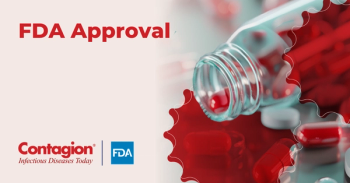
Examining COVID-19 Transmission After First-Dose of Vaccine in LTCF
Increased facility-level vaccine coverage amongst residents and staff was associated with lower cases in the latter population.
In the United States, residents and the staff at long-term care facilities (LTCF) have had a high COVID-19 incidence, and the former is associated with one of the highest mortality rates in the country.
As states have rolled out their COVID-19 vaccine programs, a study from the Nebraska Department of Health & Human Services looked at COVID-19 transmission association with staff and residents after the first-dose of a two-dose vaccine regimen in LTCF in that state.
The state began its COVID-19 vaccines at LTCF on December 28, 2020 as part of the Centers for Disease Control and Prevention (CDC) Pharmacy Partnership for Long-term Care Program. By February 5, 159 Skilled Nursing Facilities (SNF) have completed their first vaccine (clinic-1) and 7271 residents and 6768 staff had been administered their first dose.
The investigators used the Federal and Pharmacy Partnership database to gather the vaccination numbers of residents and staff. They followed the SNFs for 21 days after clinic-1 from December 28-February 5 for any first-time COVID positives. The National Healthcare Safety Network (NHSN) database was used to collect the information on the number of residents present at the facility on the day of clinic-1. The staff count for each facility was extracted from NE-Licensure for LTCF. The investigators gathered case information from the state surveillance, NHSN, and Test-Nebraska platform.
The findings showed that staff vaccine coverage was associated with a reversal of cases, but no reversal of cases was found in resident coverage of the vaccine and new resident transmission.
For the staff, the results showed a progressive result for, “each percentage increase in staff vaccine coverage, the odd of having a new staff positive case 7 days and 14 days after clinic-1 decrease by 26% and 48% respectively,” the investigators reported.
For the residents, “possible confounding exists when infected residents might have tested positive 7 to 14 days after clinic-1 that were not impacted by the vaccine.”
While there was a positive association witnessed in the staff population, the investigators wanted more data after the second dose.
“Although we observed the association between lower case-count with increased facility-level vaccine coverage, we would need to wait for the administration of the second dose of vaccine before assessing the level of association between coverage and new transmission,” the investigators wrote. “Further initiatives are warranted to increase the sub-optimal vaccine coverage for staff.”
Newsletter
Stay ahead of emerging infectious disease threats with expert insights and breaking research. Subscribe now to get updates delivered straight to your inbox.



















































































































































































































































































